Table of contents
Rice milk or rice drink (named in the EU ) is a cereal milk that basically consists of water and rice, although commercial products usually also contain vegetable oils. Depending on the manufacturer, it may also be enriched with flavorings, minerals or thickeners. Rice drinks are a popular alternative for people who are lactose intolerant or who want to avoid animal products.
Use in the kitchen
Rice milk's mild, sweet taste is reminiscent of its original ingredients, rice and water. Rice drink is particularly suitable for sweet dishes or desserts. The lactose-free and vegan plant milk is often used for muesli, porridge, pudding, rice pudding or banana bread. Rice milk is also popular in smoothies, just as a refreshing snack or as a warm cocoa drink (vegan hot chocolate ) on winter days. Animal milk contained in baked goods can easily be replaced with the vegan rice drink. This makes it very easy to make vegan rolls, vegan cakes and vegan pancakes. 1 There are many rice milk recipes on the internet.
For preparing savory dishes, such as béchamel sauce or mashed potatoes, oat milk or soy milk are better suited because they are less sweet. However, tastes differ: if you don't mind the slight sweetness of rice milk, you can also use it for savory dishes. Just try out the different milk alternatives to find your personal favorite.
Rice drinks are usually made from cooked rice (or from pickled and briefly roasted rice), so rice milk is not considered a raw food. You can't buy it raw either, but you can buy it in organic quality.
Homemade
How can you make rice milk? Making rice milk is very easy. Since homemade rice milk contains no additives, it is even considered healthier than the purchased version.
To make half a liter of rice drink you only need 500 ml of water, 100-150 g of cooked rice (preferably organic whole grain rice, but white long grain rice or fragrant rice will also work), a pinch of salt and a blender.
First, cook the rice as usual. Then put it in a blender with 250 ml of water. Add more water little by little during the blending process. Let the mixture rest for at least 1 hour before further processing. Using a kitchen towel, a nut milk bag or a fine-pored sieve, you can filter the finished mixture and put it in a suitable container (glass with a screw top). If the container is airtight, the rice milk will keep in the fridge for around 2-4 days. Shake the drink well before consumption so that the sedimentary particles rise from the bottom. 2
If you want a little variety, you can also refine the vegan rice drink with spices or sweeten it a little. Simply add some cinnamon, natural vanilla extract or 2-3 pitted dates to the mixture during the mixing process.
Vegan recipe for spelt rolls with rice milk
Ingredients (for 6-8 rolls) : 140 ml + 50 ml rice drink (organic), 1 cube of fresh yeast, 1 tbsp raw cane sugar (or less), 500 g spelt flour (or wholemeal spelt flour ), 1 tsp salt, 2 tbsp rapeseed oil (refined) .
Preparation: Mix the rice drink with yeast and sugar and leave to rest for 1 hour. Then add spelt flour, salt and oil and use a dough hook to work everything into a dough. Add the remaining 50 ml of rice milk and knead briefly again. Leave the dough to rest in a bowl for 1 hour. Then shape the dough into a roll and cut off 6-8 even pieces. Shape these into small rolls and leave to rise for another 15 minutes. Meanwhile, preheat the oven to 180 °C top and bottom heat and bake the rolls for approx. 30 minutes. Shortly before baking, the rolls can be brushed with warm water and sprinkled with sesame seeds, poppy seeds, sunflower seeds orpumpkin seeds .
Vegan rice milk recipe for hazelnut dessert
Ingredients (for 4 people): 25 g margarine, 1 tbsp wholemeal spelt flour, 100 g ground hazelnuts, 300 ml rice milk (organic), 2 tbsp raw cane sugar, 1 dash of lemon juice .
Preparation: Mix the hazelnuts with the raw cane sugar. Melt the margarine in a large saucepan, stir in the flour and make a roux. Stir in some of the hazelnuts and add the rice milk slowly, stirring constantly. Now work the rest of the hazelnut-raw cane sugar mixture into the hot mixture. Then add a dash of lemon juice and bring the whole thing to the boil again, stirring well. Divide the dessert between 4 bowls and allow the mixture to cool before serving.
Vegan recipes with rice milk can be found under the note: " Recipes that have the most of this ingredient ".
| Not only vegans or vegetarians should read this: Vegans often eat unhealthily. Avoidable nutritional errors . |
Purchasing - Storage
Rice drinks are now available in almost all supermarket chains such as Coop, Migros, Denner, Volg, Spar, Aldi, Lidl, Rewe, Billa, Edeka, Hofer etc., usually even in organic quality (organic quality). Organic shops, organic supermarkets ( Denn's Biomarkt, Alnatura ), natural food or health food stores often also stock organic association goods, which means that their production takes place under even stricter guidelines.
Manufacturers tend to add vitamins and minerals (such as calcium ), flavorings, sugar and salt to the nutrient-poor and tasteless rice milk. Vegetable thickeners such as guar gum (E412) or carrageenan (E407) can also be added to the drink to counteract the liquid consistency. When buying, pay attention to whether the rice milk is enriched or sweetened and whether additives or additional sugar are listed among the ingredients. Unenriched rice milk is often found with the addition of original, natural, natural, unsweetened, classic or pure.
Rice drinks are available in a wide variety of flavors. Vanilla rice drinks and chocolate rice drinks are often found on the shelf next to regular rice milk and are only slightly more expensive than the original product.
In addition to various flavors, you can also find mixtures with hazelnut milk, almond milk, soy milk, coconut milk and occasionally with fruits (e.g. mango-vanilla) on the market.
The availability of rice milk varies depending on the size of the store, catchment area, etc. Our recorded food prices for the DA-CH countries can be found above under the ingredient image - and by clicking you can see their development at various suppliers.
Storage tips
Homemade rice milk will last for 2-4 days in the fridge if it is well sealed. Stored rice milk that has been treated with ultra-high temperature will last for several months to years if it is unopened and unrefrigerated. Once opened, it will only last for 2-4 days and must be kept in the fridge. 3
Ingredients - Nutritional values - Calories
100 g of rice milk contains 50 kcal. Rice drink consists mainly of water and contains hardly any proteins, fats, fiber or other nutrients. 4
Rice milk covers the daily sodium requirement at 51 mg/100g, or 6%. However, this high content does not only come from the rice, but is usually added afterwards, e.g. in the form of table salt, sea salt or algae. Soy milk and oat milk have comparable sodium values. Sweet soy sauce (4,240 mg) and regular breadcrumbs (400 mg) have significantly higher values. 4 Sodium, together with potassium, is responsible for maintaining the membrane potential of the cells in the body. You should not exceed the recommended daily amount of sodium too much, because too high a sodium content can increase blood pressure and the risk of cardiovascular disease. 5
The amount of vitamin E (alpha-tocopherol) accounts for around 4% of the daily requirement when consuming 100 g of rice drink (and a daily requirement of around 2000 kcal). The amount of 0.46 mg/100g can be compared to coconut flakes and oat flakes . Almonds (25.6 mg) and hazelnuts (15 mg), on the other hand, contain a lot of the vitamin. 4 As an antioxidant, vitamin E protects polyunsaturated fatty acids in membrane lipids, lipoproteins and depot fat from destruction by oxidation (lipid peroxidation). 6
The complete ingredients of rice milk, the coverage of the daily requirement and comparison values with other ingredients can be found in our nutrient tables. In the article Nutrients explained you will get a detailed insight into the topic.
Effects on health
Is rice drink healthy? Rice milk has little to do with rice, as this grain milk consists mainly of water. Due to the filtering process, it contains very little protein and fat (low rice milk fat content) and has almost no nutrients. The carbohydrates it contains make rice milk a quick source of energy. Rice drink also contains no cholesterol, which is another reason why manufacturers like to market it as "heart-friendly".
Rice milk is free of milk protein, lactose, vegan and gluten. It is therefore suitable for people with lactose intolerance, a cow's milk allergy or soy allergy and for vegans. Rice drink cannot be considered a rich source of protein because it contains almost no proteins.
Because rice milk does not contain so-called FODMAPs, it is very digestible. FODMAPs are certain carbohydrate compounds (fermentable multiple, double, single sugars and polyhydric alcohols) that can lead to digestive problems such as flatulence, stomach pain and diarrhea. 7 This means that people with irritable bowel syndrome or unclear digestive problems can also use rice milk.
Secondary plant substances
Many of the health effects of rice milk can be attributed to the secondary plant substances contained in the basic ingredient rice. Our article on secondary plant substances provides an overview of the classification of the substance groups, their occurrence in foods and possible effects on humans. We were unable to determine how many of the secondary plant substances from rice are also contained in the processed rice milk. Rice itself contains the following secondary plant substances, among others: 22,23,24
- Isoprenoids: Triterpenes/terpenoids: Phytosterols/stanols (beta-sitosterol, campesterol, stigmasterol, stigmastanol, avenasterols), gamma-oryzanols (cycloartanyl ferulate, 24-methylene cycloartanyl ferulate, campesteryl ferulate, beta-sitosteryl ferulate); Tetraterpenes: carotenoids (lutein, xeaxanthin, lycopene, beta-carotene)
- Polyphenols: Phenolic acids: hydroxybenzoic acids (salicylic acid, gallic acid, protocatechuic acid, 4-hydroxybenzoic acid, vanillic acid, syringic acid), hydroxycinnamic acids (ferulic acid, caffeic acid, p-coumaric acid, chlorogenic acid, sinapic acid, cinnamic acid); Flavonoids: flavonols (isorhamnetin 3-O-glucoside, quercetin 3-O-glucoside, quercetin 3-O-rutinoside, diosmetin 8-C-hexoside, myricetin), anthocyanins (cyanidin-3-glucoside, cyanidin-3-O-galactoside, pelargonidin 3-O-glucoside, peonidin 3- O-glucoside ), flavones (apigenin, luteolin, tricine), flavanols (catechin, epicatechin), flavanonols (taxifolin); Condensed tannins (ellagic acid, procyanidins)
- Protease inhibitors: phytic acid
However, it should be noted that the composition of secondary plant substances in rice can vary depending on the variety, time of harvest, growing conditions and processing. Therefore, quantities are only of limited use and should only be understood roughly.
Brown rice in particular contains sterols found in the bran. The most common sterol is gamma-oryzanol, a ferulic acid ester of the main phytosterols such as campesterol, stigmasterol,beta-sitosterol and triterpenes. Gamma-oryzanol has several physiological properties, including effects on body mass and muscle, cholesterol levels and potential anti-cancer properties. In the literature, brown rice in particular has been attributed antidiabetic, cholesterol-inhibiting, lipid-lowering, cardioprotective and antioxidant effects. 21,24
The phenolic acids found in rice provide anti-inflammatory, hypoglycemic, anticarcinogenic, antiallergic and antiatherosclerotic properties. 23
One study discovered a total of 42 secondary metabolites in the seeds of black, red, brown and white rice. Black rice is the richest source of anthocyanins, while flavanols are mainly found in red rice. Gamma-oryzanol is found in red, white and brown rice. Brown and white rice mainly contain flavones and flavonols. 22,23 Tricin is one of the seven flavonoids commonly found in rice and is found mainly in the bran, accounting for 77% of all seven flavonoids (131.5 mg/100g). Other flavonoids include luteolin (14%), apigenin (6%), quercetin (3%), isorhamnetin (1%), myricetin (<1%) and kaempferol (<1%). Flavonoids have anti-allergic, anti-inflammatory, antiviral, antimicrobial, antioxidant and anticarcinogenic effects. 24
The phytic acid found in rice bran binds starch and proteins. It therefore reduces the absorption of minerals. However, phytic acid has a health function as an antioxidant, among other things. Read more about this in the article on phytic acid .
Dangers - Intolerances - Side effects
How healthy is rice milk for children? Due to the arsenic contamination during rice cultivation, rice milk also contains arsenic and is therefore only suitable for small children to a limited extent, as they can absorb arsenic from rice milk even more easily than adults. However, the market for plant-based milk is now very large. Alternatively, you can switch to milk made from almonds, hazelnuts, soy, oats, quinoa or millet or use these in addition to rice milk. Arsenic is present in high concentrations in the groundwater in many rice-growing areas. Microorganisms convert the inorganic arsenic into organic forms (monomethylarsonic acid (MMA) or dimethylarsic acid (DMA)) and make it available to plants. Regular consumption is genotoxic, chromosome-damaging and can promote cancer. 8,9
Arsenic accumulates in rice through the roots ten times more than in other grains. Rice milk can therefore also contain arsenic in concentrations that are harmful to health. In September 2013, the Food and Drug Administration found up to 46 μg of inorganic arsenic per liter of rice milk. The maximum value for drinking water in the EU is 10 μg/l. However, other rice products, such as rice cakes, can also be affected. Caution is particularly advised for infants and small children. 10,19,20
As a prophylactic measure, garlic is said to help reduce the arsenic content in the blood and urine. Sulphur-containing substances such as allicin are said to precipitate arsenic. This was confirmed by animal experiments at the Indian Institute of Chemical Biology in Kolkata. 11 It is somewhat questionable whether two to three cloves of garlic a day are realistic for children.
Ecological footprint - animal welfare
The rice for rice drinks in Europe usually comes from Italy or Spain, which has a negative impact on the personal ecological balance if consumed daily. In comparison, the ecological footprint of oat drinks, soy drinks or millet drinks is significantly better, provided the products are grown locally.
The environmental impact of rice milk is worse compared to other types of plant-based milk. Rice cultivation produces significantly more greenhouse gases. Wet rice cultivation releases methane through rotting processes, and dry rice cultivation releases nitrous oxide into the air. The frequent use of pesticides in conventional rice cultivation leads to soil contamination, so you should always buy organic rice products .
Long transport routes, intensive processing and sale in beverage cartons also mean that the ecological balance is rather poor.
Many rice drinks are enriched with calcium. Cereal drinks mainly use algae lime from dead algae ( Lithothamnium calcareum ), which comes from different regions depending on the manufacturer, e.g. from the North Sea or the Atlantic Ocean. Even if the living algae are not used here, but the dead parts are collected from the seabed, the question remains as to whether this is permitted for organic products. 15 A German Federal Administrative Court has ruled that enrichment violates the EU Organic Regulation . However, the ruling was forwarded to the European Court of Justice in 2018 for a final decision. In 2018, after a thorough examination, Bio-Suisse decided that the addition of this mineral is not permitted. 16 According to the 2019 EU Implementing Regulation, algae lime from natural sources is back on the list. 17 Individual organic associations can allow its use or not.
For detailed explanations of various sustainability indicators (such as ecological footprint, CO2 footprint, water footprint), see our article: What does the ecological footprint mean?
Worldwide occurrence - cultivation
For a long time, soy milk was the best substitute for cow's milk. The process for alternative milk substitute drinks, such as oat drinks, was developed by researchers in Sweden in 1993.
Rice is the second most important grain in the world and a staple food for around half of the world's population. Rice is used in all kinds of dishes, especially in Asia. It is therefore not surprising that 90% of rice production takes place in Asian countries such as China, India, Japan and Thailand. 12 But Brazil and the USA, as well as European countries such as Italy, Spain and France, also grow rice.
Industrial production
The harvested wholegrain rice is first finely ground, then boiled with water and mashed. This creamy, slimy mash is then fermented. Added enzymes convert the long-chain starch into multiple sugars, which gives the drink its mild sweetness. The watery grain mash is then sieved and filtered in several steps. The filter residue can be used as animal feed. The filtrate, which now appears watery, is emulsified with vegetable oil (usuallysunflower oil or safflower oil, for example) to improve its taste, as rice is almost fat-free.
Rice contains more vegetable lecithin than oats, which is why it can be omitted in the production of rice milk. Lecithin is a component of animal and human cell membranes and enables the emulsification of fats and water. It also has stabilizing, hydrating, homogenizing and texture-improving properties and is therefore a popular additive in foods. 13
For a fuller taste, you can add a little sea salt to the grain milk. Homogenization distributes the ingredients better. A longer shelf life is ensured by ultra-high temperature treatment. This process also gelatinizes the starch contained in the drink and makes it gelatinous. The taste sensation in the mouth is similar to that of animal milk. 1
Further information
The term "rice milk" is actually incorrect, because the term milk is legally protected ( EU Regulation No. 1308/2013 of the European Parliament and of the Council of 17 December 2013). Only products obtained by milking an udder (cow's milk, sheep's milk, goat's milk) may be called milk. Plant-based milk alternatives are therefore usually found in stores under the name "beverage" or "drink".
Similar plant-based drinks
Other plant-based drinks (plant milk), which are often used in the kitchen as milk substitutes, include almond drink, oat drink and soy drink.
Alternative names
In addition to rice milk and rice drink, you can also find the spelling rice drink or rice milk, occasionally with the addition of whole grain. In English, rice drink is called rice milk, but you can also find rice drink or brown rice drink.
Other applications
Rice milk is also used in the cosmetics industry. It is said that the antioxidants and acids it contains protect the skin against UV radiation and can reduce wrinkles and spots. Rice milk is said to help soothe irritated skin in the case of sunburn. The ingredient rice milk can be found in soaps, cleansing waters and shower gels. Rice drink is also used in hair products: it is now used in shampoos, conditioners and hair masks. Rice water, not rice milk, is part of the traditional hair care routine, especially in Japan 14 and is still used in many cosmetic products today. The fermented version of rice water is said to be even more effective. 18
Bibliography - 24 Sources (Link to the evidence)
| 1. | Unabhängige Gesundheitsberatung. Reisdrink Warenkunde. |
| 2. | Reishunger.com. Reismilchherstellung. |
| 3. | Eatsmarter.de. Warenkunde Reismilch. |
| 4. | USDA United States Department of Agriculture. |
| 5. | Leyvraz M, Chatelan A et al. Sodium intake and blood pressure in children and adolescents: a systematic review and meta-analysis of experimental and observational studies. Int J Epidemiol. 2018;47(6):1796–1810. |
| 6. | Lee GY, Han SN. The role of vitamin e in immunity. Nutrients. 2018;10(11):1614. |
| 7. | Barrett JS. How to institute the low-FODMAP diet. J Gastroenterol Hepatol. 2017;32(Suppl 1):8–10. |
| 8. | Banerjee M, Banerjee N et al. High arsenic in rice is associated with elevated genotoxic effects in humans. Scientific Reports. 2013;3(2195). |
| 9. | Ärzteblatt.de Arsen macht Reis genotoxisch. 2013. |
| 10. | Verbraucherzentrale.de Arsen in Reis - Was ist bei Säuglingen und Kleinkindern zu beachten. 2019. |
| 11. | Chowdhury R, Dutta A et al. In vitro and in vivo reduction of sodium arsenite induced toxicity by aqueous garlic extract. Food and Chemical Toxicology. 2008;46(2):740-751. |
| 12. | Blumenthal A., Stransky M. Ernährung und Lebensmittel von A-Z. Editions M, 1. Auflage 1993. |
| 13. | Chiplunkar PP, Pratap AP. Ultrasound assisted synthesis of hydroxylated soybean lecithin from crude soybean lecithin as an emulsifier. J Oleo Sci. 2017;66(10):1101–1108. |
| 14. | Inamasu S, Ikuyama R et al. The effect of rinse water obtained from the washing of rice (Yu-su-ru) as a hair treatment. International Journal of Cosmetic Science. 2010;32(5):392–393. |
| 15. | Deutschlandfunknova.de Milchersatz-Getränke. Sojamilch: Mit Kalziumzusatz aus Algen. |
| 16. | Bio Suisse. Erläuterungen zu den Richtlinienänderungen Teil III 2018 (pdf). |
| 17. | Amtsblatt der Europäischen Union. Durchführungsverordnung (EU) 2019/2164 der Kommission vom 17. Dezember 2019 zur Änderung der Verordnung (EG) Nr. 889/2008. |
| 18. | Hunaefi D, Akumo DN et al. The effect of lactobacillus plantarum atcc 8014 and lactobacillus acidophilus ncfm fermentation on antioxidant properties of selected in vitro sprout culture of orthosiphon aristatus (Java tea) as a model study. Antioxidants. 2012;1(1):4–32. |
| 19. | Bundesinstitut für Risikobewertung. EU-Höchstgehalte für anorganisches Arsen in Reis und Reisprodukten durch Verzehrsempfehlungen zum Schutz von Säuglingen, Kleinkindern und Kindern ergänzen. Aktualisierte Stellungnahme Nr. 017/2015 des BfR vom 06. Februar 2014. |
| 20. | Bundesinstitut für Risikobewertung. Fragen und Antworten zu Arsengehalten in Reis und Reisprodukten. Aktualisierte FAQ des BfR vom 22. Dezember 2020. |
| 21. | Munarko H, Sitanggang AB et al. Phytochemical, fatty acid and proximal composition of six selected Indonesian brown rice varieties. CyTA - Journal of Food. 2020;18(1):336–343. |
| 22. | Pereira-Caro G, Cros G et al. Phytochemical profiles of black, red, brown, and white rice from the camargue region of france. J Agric Food Chem. 2013;61(33):7976–7986. |
| 23. | Ravichanthiran K, Ma ZF et al. Phytochemical profile of brown rice and its nutrigenomic implications. Antioxidants. 2018;7(6):71. |
| 24. | Verma DK, Srivastav PP. Bioactive compounds of rice (Oryza sativa L.): Review on paradigm and its potential benefit in human health. Trends in Food Science & Technology. 2020;97:355–365. |

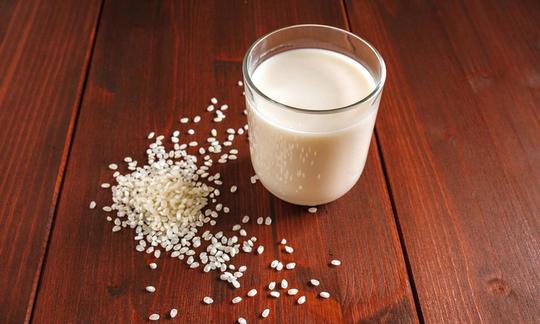

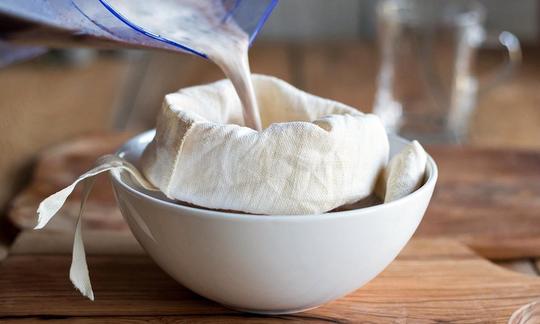

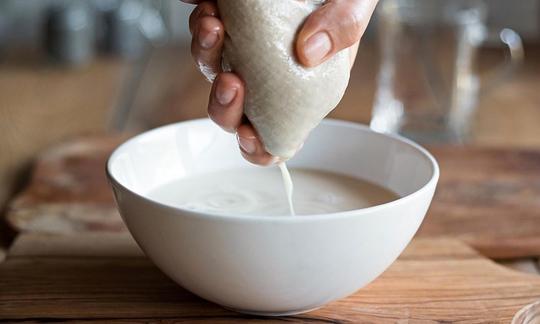

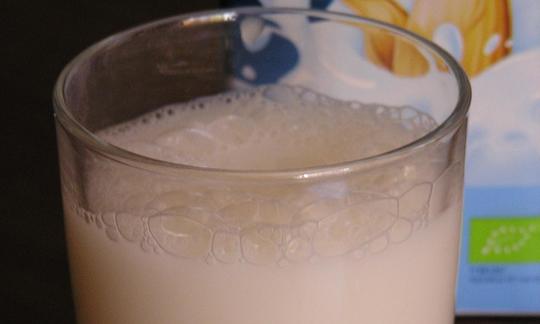

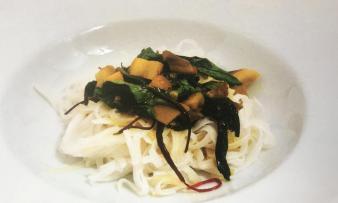
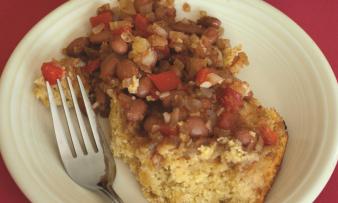
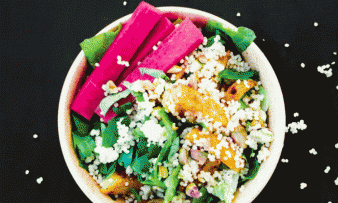





Comments